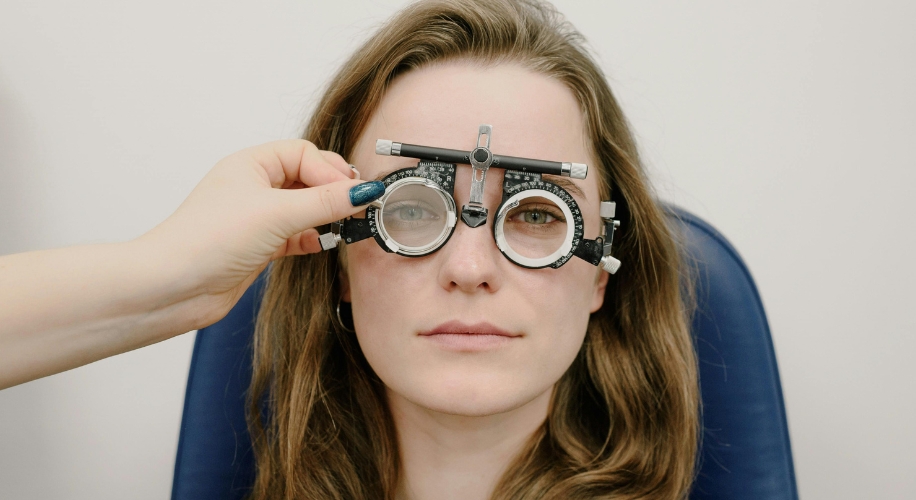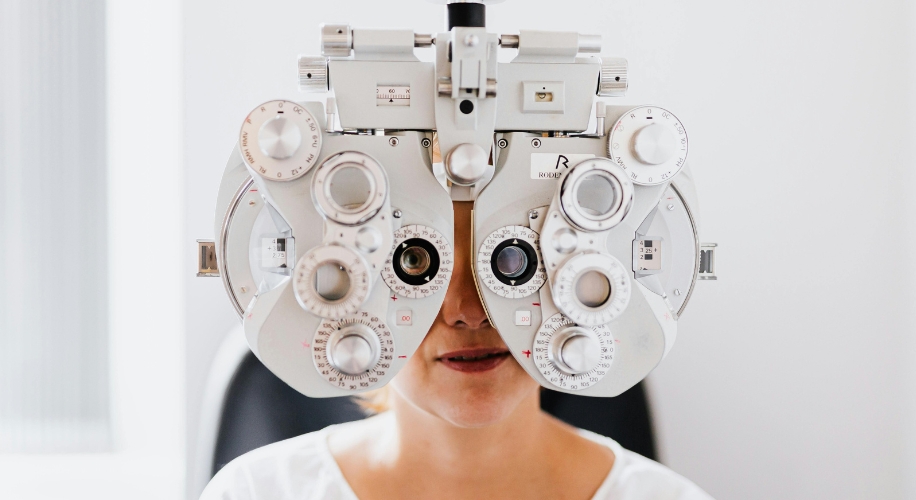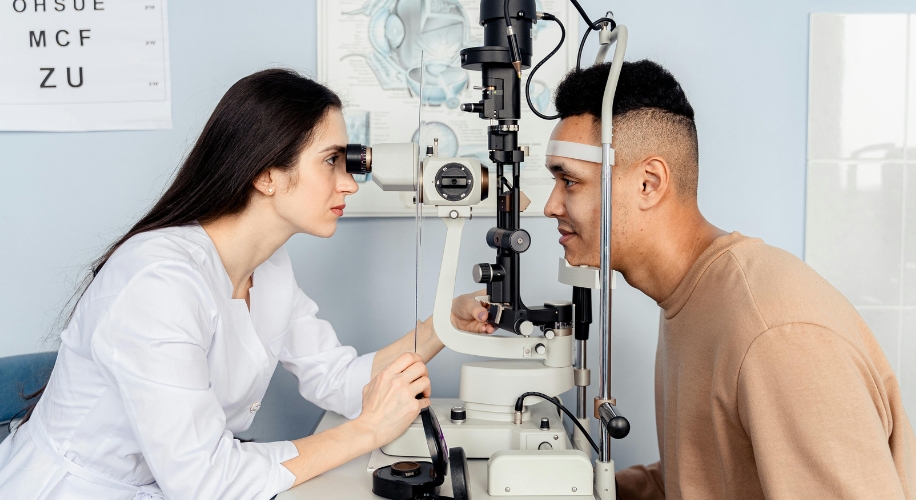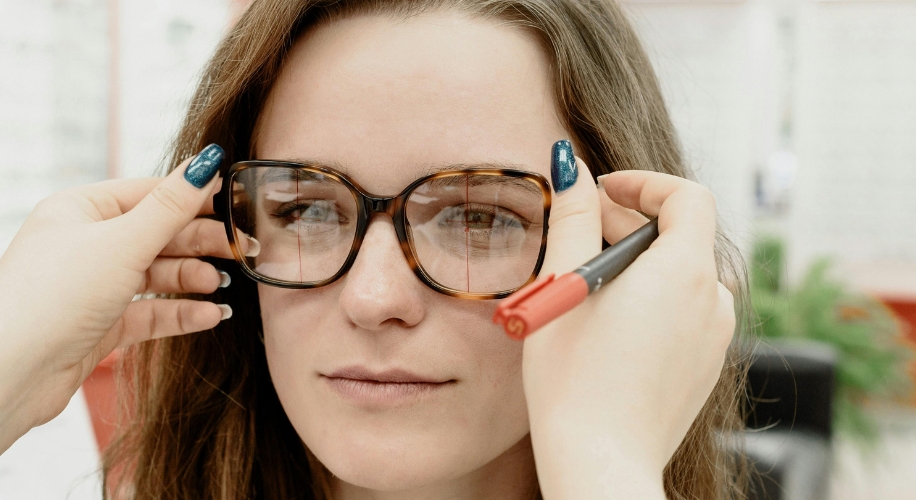What to Expect at an Eye Exam
Eye exams are essential for maintaining good vision and overall eye health. Whether it’s your first visit to an eye doctor or you’re a seasoned patient, understanding what to expect can help alleviate any anxiety. In this guide, we’ll walk you through the entire process of an eye exam, from arrival to the final recommendations.
Photo by Ksenia Chernaya
Why Are Eye Exams Important?
Before diving into the details of what happens during an eye exam, it’s important to understand why these check-ups are vital. Regular eye exams can:
- Detect Vision Problems: Many eye conditions, such as glaucoma and macular degeneration, have no early symptoms but can be detected through routine exams.
- Monitor Eye Health: Regular check-ups help track any changes in your vision or eye health over time.
- Evaluate Overall Health: Eye exams can reveal signs of systemic conditions like diabetes or high blood pressure.
Preparing for Your Eye Exam
- Schedule an Appointment: When was the last time you had an eye exam? Most experts recommend adults have a comprehensive eye exam every one to two years, while children should have exams annually. To start, find an optometrist and schedule an appointment that fits your schedule.
- Gather Your Information: Before your appointment, make sure to gather a list of any medications you are currently taking, information about your medical history, any eye conditions in your family, and your insurance information.
- Bring Your Current Glasses or Contacts: If you wear glasses or contact lenses, bring them along. This will help the eye doctor assess your current prescription and make any necessary adjustments.
Photo By: Kaboompics.com
What Happens During an Eye Exam?
1. Arrival and Check-In
When you arrive at the eye clinic, you’ll check in at the front desk. You may be asked to fill out forms regarding your medical history and vision needs. Be sure to arrive a little early to allow time for this process.
2. Preliminary Tests
After check-in, a technician or assistant will conduct preliminary tests, which may include:
- Visual Acuity Test: You’ll read letters from an eye chart to assess how well you see at different distances.
- Puff Test or Tonometry: This test checks for glaucoma by measuring your eye pressure. You may feel a quick puff of air, which is painless.
- Retinal Imaging: This advanced test captures detailed images of the back of your eye, aiding in the detection of various conditions.
- Visual Field Screening: This test assesses your peripheral (side) vision. You’ll be asked to focus on a central point while identifying when you see lights or objects in your peripheral vision, helping to detect conditions like glaucoma and neurological disorders.
Photo by Antoni Shkraba
3. Comprehensive Eye Examination
Once the preliminary tests are complete, the eye doctor will perform a more thorough examination. This may include:
- Refraction Test: Using a device called a phoropter, the doctor will assess your need for corrective lenses by showing you various lens options.
- Slit-Lamp Examination: A slit lamp allows the doctor to closely examine the structures of your eyes, including the cornea, lens, and retina.
- Dilation: Eye drops may be administered to dilate your pupils. This process helps the doctor examine the back of your eye more thoroughly. Keep in mind that your vision may be blurry for a few hours after this.
4. Discussion of Results
After all tests are completed, the doctor will review the results with you. This is your opportunity to ask questions about your vision and eye health. Expect discussions around:
- Any changes in your vision since your last exam.
- Recommendations for corrective lenses, if necessary.
- Suggestions for eye care or treatment if any issues are identified.
After the Eye Exam
- Prescription for Glasses or Contacts: If you need corrective lenses, your doctor will provide you with a prescription. You can then choose to order your glasses or contact lenses from your preferred retailer. Look for affordable eyewear options that suit your style.
- Follow-Up Appointments: Depending on the results of your exam, you may need to schedule follow-up appointments. This is especially true if any issues were detected during your exam.
- Post-Exam Care: If your eyes were dilated, it’s advisable to have someone drive you home, as your vision might be affected. Additionally, consider wearing sunglasses to protect your eyes from bright light.
Photo by Ksenia Chernaya
Maintaining Eye Health
- 20-20-20 Rule: To reduce eye strain from screens, every 20 minutes, take a 20-second break and look at something 20 feet away.
- Eat a Balanced Diet: Foods rich in omega-3 fatty acids, antioxidants, and vitamins A, C, and E contribute to eye health. Incorporate leafy greens, fish, nuts, and colorful fruits and vegetables into your diet.
- Protect Your Eyes: Wear sunglasses with UV protection when outside, and use safety glasses if you’re working with hazardous materials or engaging in sports.
An eye exam is a vital component of maintaining your overall health and getting new glasses. By understanding what to expect during your visit, you can approach the appointment with confidence. Regular exams not only help you see clearly but also protect your eye health for years to come. Don’t wait—schedule your eye exam today and take the first step toward clearer vision and healthier eyes!








 Canada
Canada